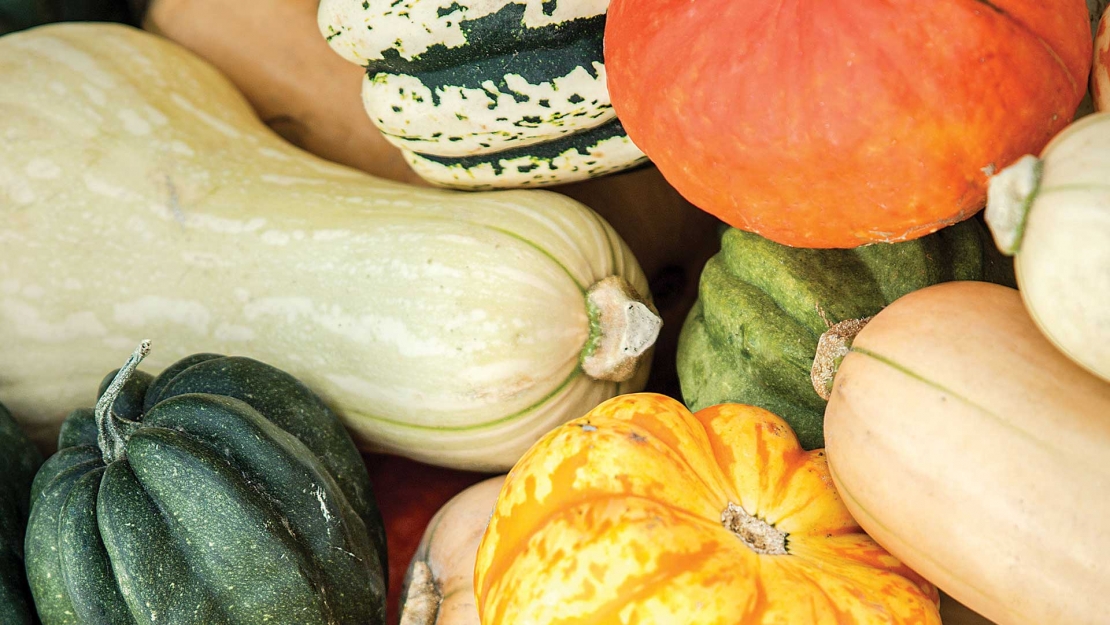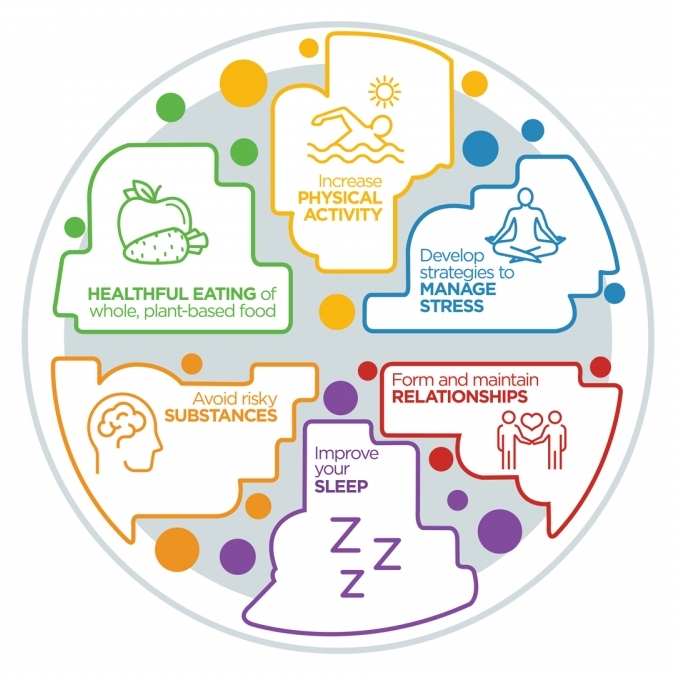Farm to Fork
The farm to fork movement (also known as farm to table) got its unofficial start in the 1960s during the countercultural revolution, when hippies began growing their own food locally and organically. Renowned chefs like Alice Waters, whose influential restaurant Chez Panisse opened in 1971, embraced the concept of local, sustainable agriculture, helping to push the movement into the mainstream. Today, it’s not uncommon to find restaurants in South Dakota and across the country marketing farm to fork dining, as processed foods fall out of favor and Americans adopt healthier lifestyles.
Put simply, farm to fork is a food system in which food production, processing, distribution, and consumption are integrated to enhance the environmental, economic, social and nutritional health of a particular place.
It consists of four principles: food security, proximity, self-reliance, and sustainability. The basic idea is that communities should have easy access to locally grown food, eliminating the need for outside suppliers. With farmers markets gaining in popularity and because consumers are more conscious than ever about the effects of food on their health, the farm to fork movement has seen explosive growth—especially over the past eight months, as the food chain has come under increasing scrutiny.
Food Supply Chain Disruptions
COVID-19’s impacts have been wide-ranging, and the food supply chain is no exception. We witnessed this early on when plant shutdowns across the country led to meat shortages. When restaurants began closing their doors nationwide or switching to takeout service only, the opposite problem occurred: there was too much food and not enough space in which to store it.
Consumers contributed to these supply chain disruptions through panic buying and hoarding, leading to empty shelves. While stores are better stocked these days, the problem persists because of labor shortages in the agricultural industry and shifting demand associated with on-again, off-again lockdowns and restaurant/school closures. Factor in smaller spending due to loss of income—a trend that affects nutritious foods such as fruits and vegetables more than most others, the very heart of the farm to fork movement—and it’s evident that supply chains will continue struggling to keep up with demand.
While many organizations struggled to keep meat and produce on shelves at the beginning of the COVID-19 pandemic, Monument Health wasn’t one of them. Using local food sources ensured patients and their families always had food available, so they could focus on their health.
Natural and Organic
With more of an emphasis on locally grown and sourced produce and meat, natural and organic foods are surging in popularity. Though they’re often lumped together, there are some key differences between the two.
“Natural” foods are perceived to be pure and healthy, but the United States Department of Agriculture (USDA) doesn’t regulate use of the word on product labels for crops. Natural foods might actually contain pesticides, as well as genetically engineered and highly processed ingredients. Organic foods, by contrast, are heavily regulated by both agencies. Foods that are labeled organic contain no toxic pesticides, chemicals, synthetic growth hormones, antibiotics, genetically modified organisms (GMO), artificial additives or preservatives. While organic foods are always natural and pesticide-free, consumers don’t always have to buy organic. Theresa Ferdinand, Manager of Employee Health & Wellbeing at Monument Health, says consumers should focus on meat, milk, and eggs above all else. “Those are where you’d want to spend your money,” she says.
For additional information, consult the “Dirty Dozen” (foods most likely to be contaminated by pesticides) and “Clean 15” (non-organic items that are generally safe to purchase) lists.
Michelle and Rick Grosek of Bear Butte Gardens near Sturgis say three things contribute to eating healthy: organic, local and fresh. Any one is going to lead to better nutrition, and all three together will build your health, your community and your food knowledge. We enjoy being THAT neighbor (producer) and coordinating with other producers to help build a healthy food community.
Product Traceability
Monument Health Executive Chef Scott Brinker says it’s important to know the story of your food. A lot of produce sold in western South Dakota is sourced from Florida or Mexico; it’s impossible to know the growing conditions without that traceable story. For this reason, he sources his beef and produce from local farms that allow him to investigate where his food is coming from and inspect the growing conditions firsthand. He is able to see the whole story of his food and pay attention to his carbon footprint in the process—everything from the grass the cows are eating to the soil and nutrients feeding that grass.
The Rise of Meal Kits
With COVID-19 forcing many restaurants to close and the cramped aisles of grocery stores leaving many shoppers jittery, consumers turned to meal kits as a convenient, socially distanced alternative. Meal kits take the guesswork out of cooking, providing ingredients and step-bystep instructions even the most novice of cooks can master. Best of all, they’re delivered right to the consumer’s doorstep. They’re the perfect model for sheltering-in-place and avoiding potential exposure to coronavirus.
Nutrition Confusion
Most of us at least make a halfhearted attempt to eat healthy, balanced meals, but nutrition is an area where there is ever-changing (and often conflicting) information. Knowing what to eat can be confusing! Yet, it’s crucial we get it right. Theresa says, “Nutrition is key in overall health and wellness—not only in preventing and treating chronic conditions, but being able to be at your peak and perform all day long.” While exercise is important, Theresa adds, “You can’t out-exercise a bad diet.”

The Chef
My Role
I'm the Executive Chef, responsible for all food that comes and goes within the Rapid City Hospital. Cafe Nourish is a full-service cafe with a grill, salad bar, deli station, and outdoor cooking area; create Bistro is more upscale, with a focus on vegan and vegetarian dishes. Both are open to the public.
My Goal
Instilling pride and excitement for cooking. Also teaching the next generation of cooks and chefs to understand and respect food and appreciate the important role they play in the hospital; food is medicine.
My Passion
Anything with fresh ingredients. I'm locked into wholesome, all-natural foods. It's also important to know the story of your food. I can go out to the patsture and see the cows, and the grass they're grazing.
Top Tip
Keep it simple! Don't overthink food with fancy stuff; make a recipe with 6 ingredients, execute it well, and make it look and taste good. Everything else comes with time.
Creamy Butternut Squash Soup
This hearty soup is always a big hit at Cafe Nourish. The medley of spices will warm you up-perfect for a chilly day in the hills!
Prep Time
15 min.
Cooking Time
45 min.
Yield
Serves: 10
Ingredients
- 1 pound butternut squash
- 2 cups apple juice
- 1/2 cup yellow onions, diced small
- 2 tsp Kosher salt
- 2 tbsp honey
- 1 tsp fine ground black pepper
- 1/2 tbsp ground ginger
- 1 cinnamon stick
- 6 cups boiling water
- 1/8 tsp canola oil
- 6 tsp vegetable stock
Step 1
Mist the bottom of a medium soup pot with oil. Over medium-high heat saute the onions until they become slightly translucent.
Step 2
Add the diced butternut squash and saute a little longer (2-3 minutes). Add the apple juice, water, vegetable base and honey. Bring to a boil and reduce to a simmer. Add the cinnamon stick, salt, pepper and ginger. Simmer for 45 min-1hr or until squash is fully cooked.
Step 3
Discard the cinnamon stick. Transfer the soup to a blender and puree until silky smooth. Pass the soup through a strainer, taste and adjust seasoning. Serve right away, or chill to 40 F within 4 hours. Can be garnished with pumpkin seeds, cilantro, pecans, apples, cinnamon, or crème fraîche.
Nutrition Facts Per Serving:
Calories 72.8
Carbs 17.2g
Fat 0.6g
Fat Calories 5.5
Saturated Fat 0.1g
Protein 1g
Cholesterol 0mg
Fiber 1.4g
Sodium 475 mg
Sugar 9.8g
Eating well and making smart choices isn’t all that difficult. There are several things you can do, according to Theresa. Portion control is huge; aim for moderation, and stick to fruits, vegetables, lean cuts of meat, and whole grains. Avoid sugar and refined grains as much as possible. Theresa recommends keeping a food diary or using an app, such as MyFitness Pal, to hold yourself accountable. Similarly, using an app to keep track of steps can be a good motivator to get moving.
Having trouble practicing portion control?
If you’re going out to eat, ask for a to-go box when you place your order and package up half your food before you even start eating. Whether dining at home or in a restaurant, take your time eating, and pay attention to hunger cues. Stop eating and push your plate away the moment you feel full.
A balanced diet is important, but sleep and exercise are also critical components to our health. Kari Anders, a Physical Therapist at Monument Health Lead-Deadwood Hospital, says “The effects of sleep and exercise are far-reaching, spanning across the brain and body systems. They affect cardiovascular health, immune response, energy levels, concentration and memory—just to name a few.” Luckily, we don’t need to sign up for a marathon to reap the benefits. Kari says “People who engage in even low to moderate exercise report an increase in energy levels.”
On the Rise. The number of Google searches related to bread and sourdough has shot up, reports show there’s been a 5-fold increase for the term “sourdough” since early March 2020.







